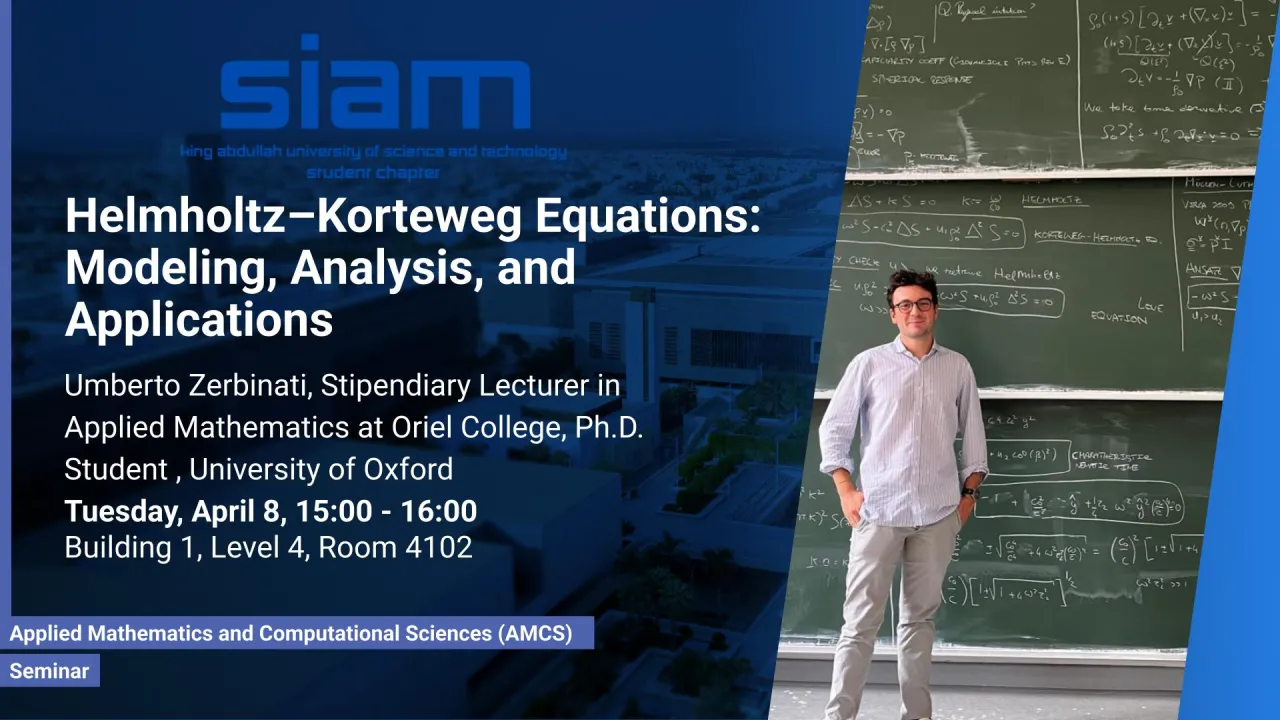
Helmholtz–Korteweg Equations: Modeling, Analysis, and Applications
This talk presents a derivation and analysis of Helmholtz-Korteweg equations, extended to nematic-Korteweg fluids, including well-posedness proofs, numerical methods, and predictions for wave propagation and scattering phenomena with experimental implications.
Overview
We derive the Helmholtz–Korteweg equation, which models acoustic wave propagation in Korteweg fluids, and extend it to a nematic variant that incorporates an additional orientational stress term. The dispersion relation of this system coincides with that of Virga’s analysis of Euler–Korteweg fluids, which we generalize to include imaginary wave numbers and the effects of boundary conditions. This enables us to investigate the influence of nematic orientation on the penetration depth of evanescent plane waves and the scattering of acoustic waves by obstacles. Our findings lead to new, experimentally testable predictions, including modifications of the Mullen–Lüthi–Stephen experiment and the behavior of wave scattering in nematic Korteweg fluids around circular obstacles.
Further, we address the well-posedness of the Helmholtz–Korteweg and nematic Helmholtz–Korteweg equations, proving the existence and uniqueness of solutions for suitable wave numbers. The challenges posed by numerical discretization of these equations are overcome by developing high-order conforming finite element methods, with boundary conditions enforced using Nitsche’s method. Our theoretical insights are demonstrated through detailed numerical simulations in two dimensions.
Presenters
Umberto Zerbinati
Brief Biography
Umberto Zerbinati is currently a Stipendiary Lecturer in Applied Mathematics at Oriel College, University of Oxford, where he is also pursuing a DPhil in Mathematics. He completed his MSc in Applied Mathematics at KAUST in 2022 and his BSc in Mathematics from the University of Pavia in 2020.